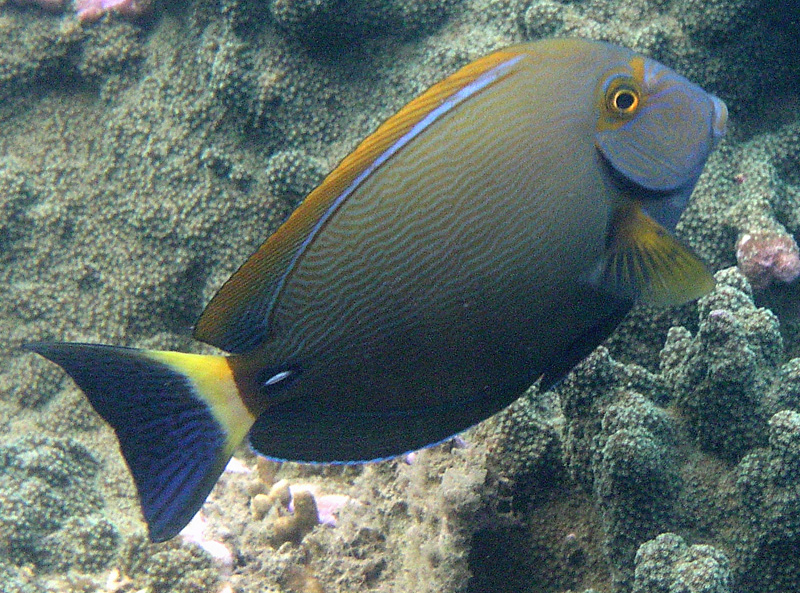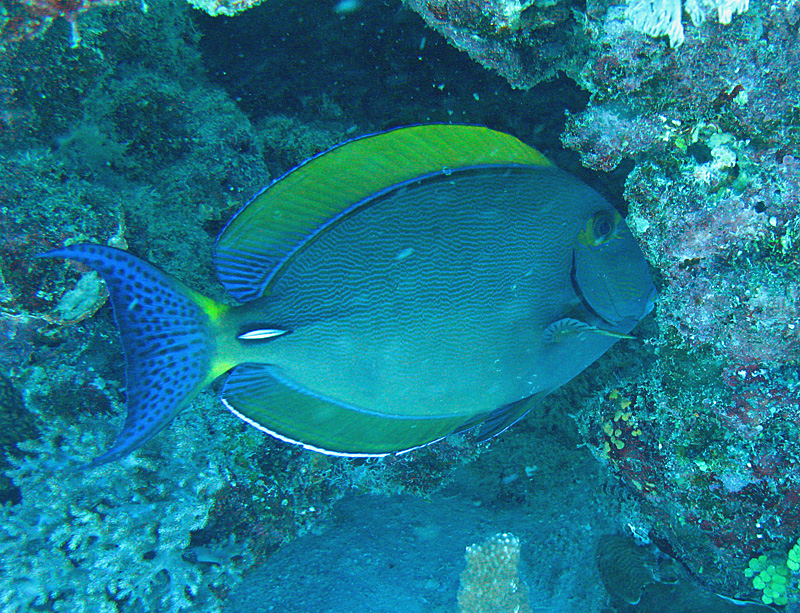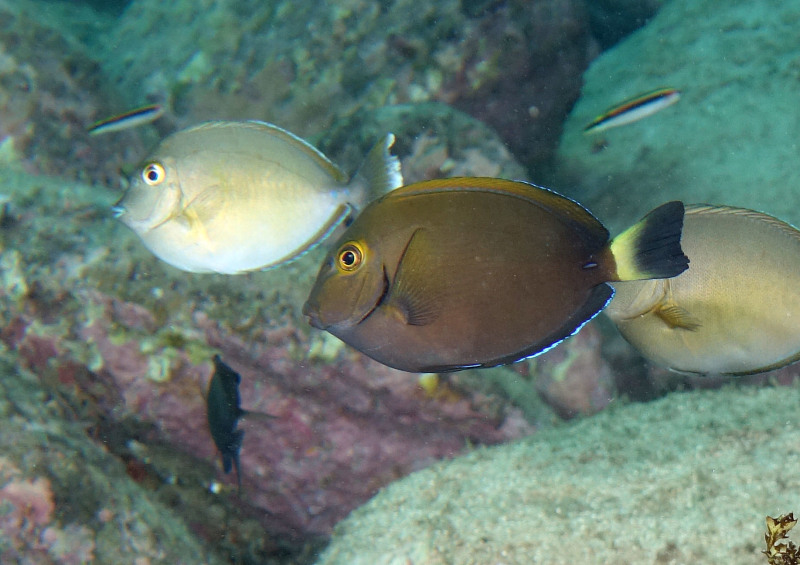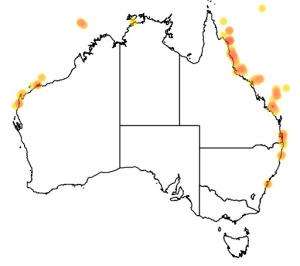Colours
Distinguishing features
A medium sized, dark brown fish with yellowish dorsal and anal fins, which appears almost black underwater when viewed from a distance. The crescent shaped tail and the white tail ring are distinctive. Distinguish from other Acanthurus species by the white caudal knives, the blue tail with spots, the irregular yellow blotch behind and adjacent to the eye, and the yellow stripe in front of the eye.
Size
- Up to 40 cm (Standard length)
Depth range
- Depth range data is not yet available.
Synonyms
Distribution
Distribution and habitat preferences
Areas of turf algae and coral rubble on reef flats and slopes.
Found in most reef habitats around the island, although most abundant on exposed reef fronts and nearby flats.
Behaviour
The Pencil surgeonfish is a roving herbivore, moving around the reef in schools and feeding on the fine turf algae. The surgeonfish are a very long lived group of fishes - after settlement to the reef, juveniles grow quickly and reach 80% of their maximum size in about 3 years, and then grow very slowly thereafter. Many of them live from 30-50years. They spawn in groups during the warmer months, when fast running tidal currents coincide with dawn and dusk.
Web resources
Danger
- unspecified - There are a pair of poisonous bony knives at the base of the tail, which can be used to inflict a painful stabbing wound if the fish is handled.
References
- Choat, J.H. and L.M. Axe (1996). Growth and longevity in acanthurid fishes; an analysis of otolith increments, Marine Ecology Progress Series, 134: 15-26. LIRS catalog number 460.
- Choat, J.H., K.D. Clements and W.D. Robbins (2002). The tropic status of herbivorous fishes on coral reefs. 1. Dietary analyses, Marine Biology, 140: 613-623. LIRS catalog number 729.
- Choat, J.H., K.D. Clements and W.D. Robbins (2004). The trophic status of herbivorous fishes on coral reefs 2: Food processing modes and trophodynamics, Marine Biology, 145: 445-454. LIRS catalog number 1202.



